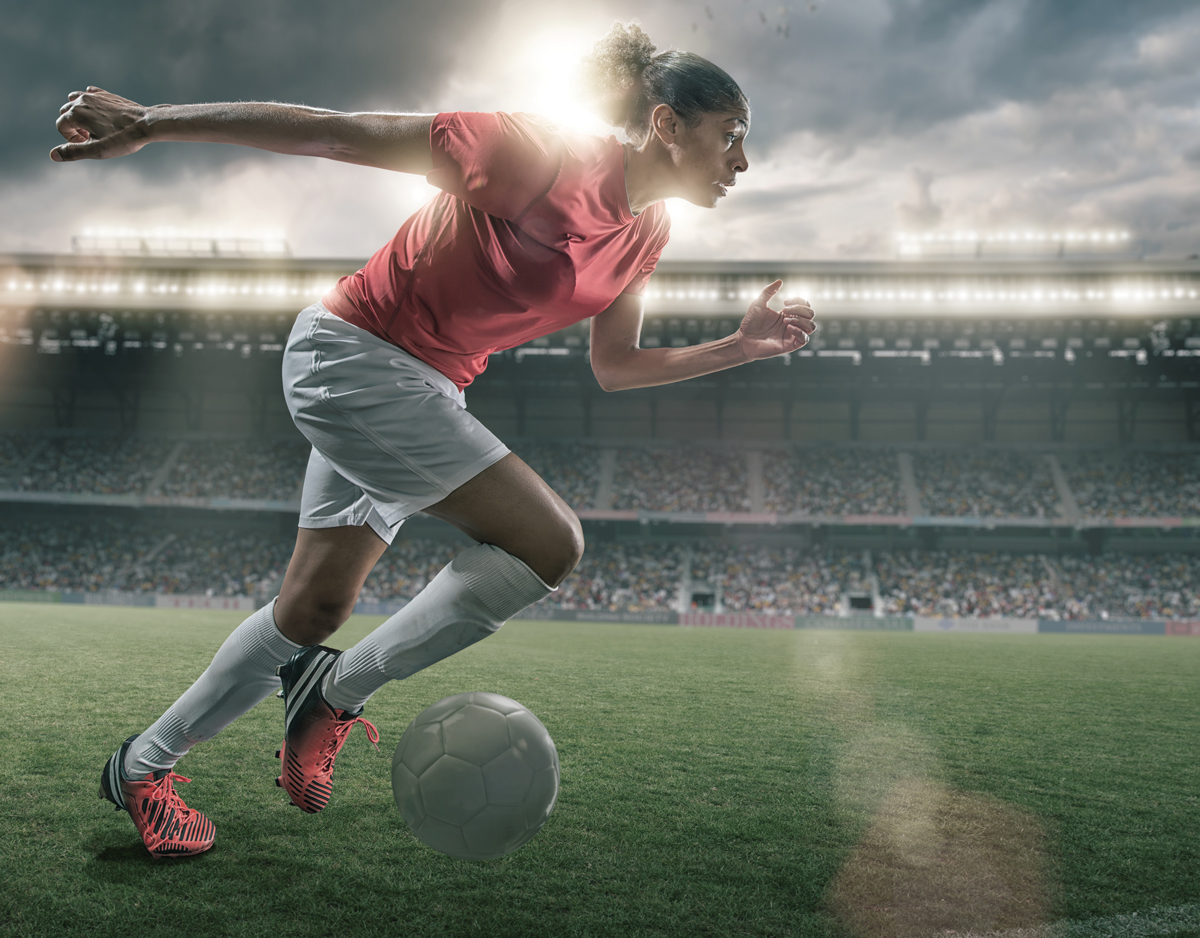In February 2016 when AFL CEO Gillon McLachlan announced that the country’s first women’s Aussie rules league would start the following year, he beamed: “There’s a revolution going on.” In the broader sporting context, it was actually more of an evolution. While there was justified excitement with Australia’s Indigenous code opening some semi-professional doors to female players with a national 8-team competition, it was hardly a precedent. After all, basketball had a national women’s competition from 1981, while soccer’s equivalent, the W-League, began in 2008 after the Women’s National Soccer League had run from 1996–2004.
The real revolution had actually taken place about 5 months before in September 2015. This was when Australia’s women’s soccer side, the Matildas, became the country’s first national sporting team to go on strike over wages and conditions. “Hurt and disrespected” after governing body Football Federation Australia would not come to the bargaining table, they pulled the pin on a tour to the US to show they meant business. Almost 2 months on, a deal was struck where the top players’ base wage would almost double.
Wage parity is some way off

Not that it was a high-water mark in terms of salary — that base figure would move to $41,000, only about $6,000 more than the minimum full-time wage — but it did represent a line in the sand that other sports would clearly note. By April 2016, it was announced that the best Australian women cricketers would earn more than $100,000 a year, while in September the average salary of netballers playing in the newly minted national competition would rise from $40,000 to $67,500.
Former Matilda and the country’s leading goal scorer, Kate Gill, was still kicking a ball when the pangs of discontent began and the women’s soccer team started making noise. By the time the issue had morphed into full-blown industrial action, Kate had retired and moved into a role with their union representatives, the Professional Footballers Association (PFA).
“I remember the first CBA [collective bargaining agreement] back in 2010,” she told The CEO Magazine. “The major argument was around making sure the girls’ laundry was going to get done.” Clean sheets may be largely the goalkeeper’s concern these days for the 2015 industrial relations coup, but Kate says there’s still a hell of a long way to go.
The W-League, for instance, has a salary cap of just $150,000 per team, and as yet there’s no minimum player wage. And the men’s equivalent, the A-League? Its cap is $2.6 million, with a minimum rookie salary of $55,000 guaranteed. “It’s about [the players] understanding that they are professionals,” says Kate. “I don’t think they view it as a career per se — I think they view it as ‘because I love football and because I love the game.’ But to say to a 6- or 7-year-old girl when she starts playing that she can have a career out of this and make a living playing football in Australia, I think that’s the best selling point.”
Even internationally, there’s just as far to go. While the best men in the world may head to the English Premier League with a payday far beyond what they can receive domestically in Australia, women would be in for a rude shock if they expected the same. The likes of Manchester United’s Wayne Rooney may earn £250,000 a week, but the top British women’s player, Steph Houghton, brings in around £65,000 — for the entire year.
The haves and have-nots
For Gabby O’Sullivan, that “love of the game” made her decision to come back to Australia worthwhile. A college basketball player with Coastal Georgia in the US, her first sport was Aussie Rules where she excelled as a junior. She played for East Fremantle in the West Australian league upon her return in mid 2016 and was quickly scouted for the fledgling Dockers team for the inaugural 2017 competition.
Gabby certainly didn’t join up for the money. The base pay for the debut competition is expected to be as little as $5,000 a season, and while the competition admittedly goes for just 2 months — with a part-time training commitment over 22 weeks — it only represents some spare change compared to the average male AFL player earnings of around $300,000 a year. While many pundits have complained long and loud to the AFL about the huge disparity, she, for one, isn’t joining them.
“It’s a starting point for the AFL,” she says. “I think a lot of the girls are just happy and excited to be involved in a bit of history. Right now I haven’t heard any complaints that we should be getting more.” If anything, Gabby was less flattering about basketball — a mega-bucks sport where the average wage is US$5.3 million a season in America’s NBA. That compares to US$75,000 for the WNBA. But at least most of the women in the US can earn a liveable wage from basketball.
Australia’s equivalent, the WNBL, has no salary cap and only a select few players earn more than $10,000 a season. In fact, 20% earn less than $5,000. Gabby felt that the issue was in part because of a lack of promotion; she’d attended NBL games for years without realising there was even a WNBL team in her home city of Perth. Then there was the lack of scope to progress. “For basketball, the development was non-existent,” she said. “Unless you were going to play for the Perth Lynx [in the WNBL], there wasn’t really any avenue to keep on developing at a high level.”
For sports that have had more time to develop, the rewards for women can be sweet. The professional women’s golf tour, the LPGA, which was founded in 1950, offers up some of the biggest riches in women’s sport — but that still doesn’t make it equitable. At around the same time as New Zealand’s world number one Lydia Ko was pulling in a cool US$390,000 for winning California’s ANA Inspiration tournament in April last year, little-known Jim Herman, the men’s world number 191, was collecting his purse for victory at the Shell Houston Open. His cheque was made out for US$1.22 million.

Covering the games
The WNBL’s lack of exposure has only intensified over the past two years with the ABC network pulling its free-to-air coverage of the competition because of budget cuts. Now the only place to view matches is on the internet. Women’s sport has long endured the chicken–egg argument of needing coverage to garner interest, but then posing the obvious question of how to get interest without television exposure. Done properly, though, televised women’s sport can be a success.
In cricket, season one of the Australian Women’s Big Bash League enjoyed higher free-to-air ratings than the A-League matches telecast on SBS 2 and Fox Sports combined. Its unexpected popularity saw Network Ten move some matches from the One HD service to its main channel. The new national netball competition has two games live to air on the Nine Network each week and the others delayed, while Fox Sports and ABC TV broadcast W-League matches.
Then there’s the issue of how the sports are covered. The ‘bad old days’ of female sports reporting showed women not receiving access to footballers or being belittled after matches. While this appears to have stopped, there’s still a long way to go with women’s commentary if a recent article in the Herald Sun is anything to go by. It revealed that female sports broadcasters working on rugby league’s The Footy Show earned just a fraction of the wages of the male stars and took economy-class flights between commitments as the men enjoyed business class. Meanwhile, in the UK, womeninsport.org estimates that just 7% of media coverage of sport across the nation is dedicated
to women.
Swimming as the aspirational model
Of the biggest international sports, tennis has long been held as the marker of parity between the sexes. By mid 2000, all grand slam tournaments offered equal prize money. The now-retired Li Na became one of China’s highest-paid athletes after her dual grand slam success, enjoying huge popularity in Asia and commanding multimillion-dollar sponsorship deals, while Sania Mirza is currently one of the top women’s doubles players and one of the biggest sports earners in India outside of cricket.

Next to tennis, swimming is another sport that seemingly has the balance right. This is a sport that midway through the twentieth century was clearly giving its female stars as much billing as its men. Back then, it was Australia’s Dawn Fraser who stood front and centre while the likes of Shane Gould and Susie O’Neill followed in the decades to come. In Europe, five-time Olympic gold medallist Krisztina Egerszegi (Hungary) and six-time winner Kristin Otto (Germany) are still revered decades after finishing up in the pool.
Swimming Australia Chief Executive Mark Anderson said while the commercial realities are clearly different for more amateur sports, such as swimming, there were perhaps some lessons to be learned when your bedrock is equal opportunity from the get go.
“It’s [equality] embedded in the environment that we have at a grassroots level,” he told The CEO Magazine. “If you go into a swim club anywhere around Australia, you’ll find that girls and boys are treated equally. If they’ve got talent, it doesn’t matter if they’re a girl or a boy — they’ll have access to the same expertise, the same resources, the same coaching. It’s not gender related at all. It’s about talent and progressing that talent through. There’s real and genuine equality at every level of the sport.”
At the top of the tree, this is reflected in the wages bill — female swimmers in the Australian team currently earn on average $56,000 per year compared to the men at $47,000. The difference comes in the shape of the women currently outperforming the men overall (the top female earns $115,000, the top male $112,000). And while there’s no hard data on exact sponsorship earnings, Mark maintains the likes of sisters Cate and Bronte Campbell would each command a similar amount to a high-profile male swimmer such as Cameron McEvoy.
Yet Kate Gill isn’t convinced that needs to be the focus for soccer given the incredible riches on offer at the pinnacle of the men’s game: “The boys can play in Europe; they can play in the A-League. It can be a career path. If the females see that, it negates the argument [about what happens at grassroots].”








Football (yes, football not ‘soccer’) is where the real big bucks are!
I find this article a little odd as I, personally, don’t care what an athlete is paid as they are all paid too much for playing games. What I am against is people, whether on gender, race, sexual preference, etc., being discriminated against. I like the U.S. system where collectively bargained agreements split revenues between owners and players and monies are then distributed appropriately. Sports that drive more revenue per athlete should have higher athlete wages…regardless of gender. In tennis, when women are more exciting and drive sales they should be rewarded and the inverse is also true. Sports are entertainment and entertainments that drive the most revenues should be rewarded regardless of gender. Day-to-day jobs are easier to discuss – equal work should equate to equal pay. Entertainment, sports, should be based on a split of revenue…if men’s or women’s sports generate less revenue than one another they should be paid less…it’s called value! I personally think that cancer researchers, 3rd world infrastructure proponents, etc. should be paid more but whatever…base wage discussions on athletes and we’ll likely never get anywhere near our goals…equal work, equal pay…that’s the real world! Entertainment wages should be based on revenues and those revenue percentages should be similar but you can’t drive popularity! Just like at any employer where their goods are less desirable than a competitors – you get paid less. Tennis, swimming, gymnastics, etc. women athletes should get paid more based on popularity, when more popular, and men’s wages for football, soccer (outside of U.S.) basketball, etc. should see the same.